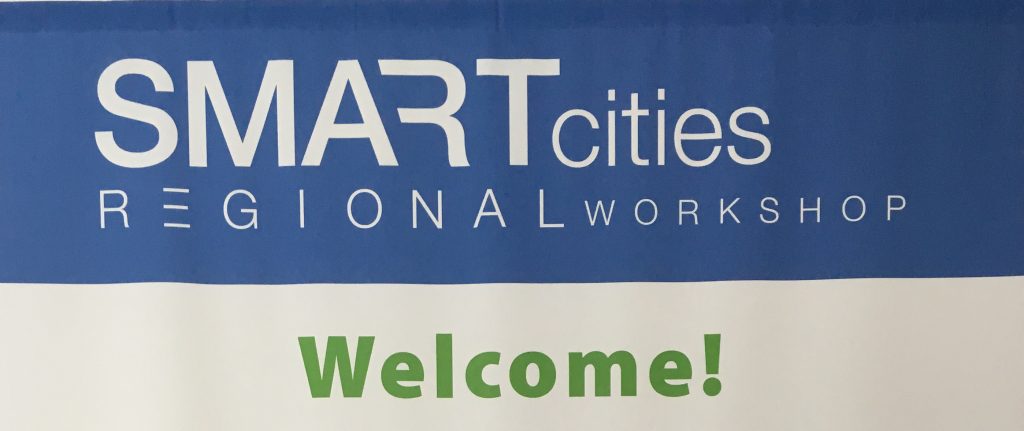-
March 02, 2016
PacTrans at Regional Smart Cities Workshop hosted by Microsoft
Last week Dr. Yinhai Wang, director of PacTrans as well as the STAR LAB in the Civil and Environmental Engineering Department at the University of Washington, had the privilege to present at the Regional Smart Cities Workshop hosted by Microsoft. The one-day event, organized by the City of Bellevue, City of Redmond, Microsoft, Verizon Wireless, eCityGov Alliance, and Community Connectivity Consortium, sought to bring together local municipalities, technology developers, engineers, and smart city experts for a day for discussion and collaboration.
The day began with a great presentation by Jesse Berst, Chairman of the Smart Cities Council, on what smart cities are, where their opportunities are, and what their major challenges are. Then Kathryn Willson, Director of Cities Solutions at Microsoft, gave a presentation on the Internet of Things (IoT).
After lunch the group split into three “tracks” for some more focused discussion. The Transportation and Public Safety track was led by Adrian Pearmine, the National Director of Smart Cities & Connected Vehicles at DKS Associates. After his general remarks about what smart cities means specifically in the transportation and public safety context, the group heard from three presenters, one of whom was Dr. Wang.
Dr. Wang spoke about how transportation involves human, infrastructure, vehicle, and environmental interactions and is therefore a very complicated system. “Traditionally, transportation has been studied through classical methods, typically with ideal assumptions, limited data support, and poor computing resources,” says Dr. Wang, “While the theories (such as traffic flow and driver behavior models) developed through these efforts provide valuable insights in understanding transportation-related issues, they are often ineffective in large-scale transportation system analysis with massive amount of data.” Also, he notes that transportation activities have been found to affect public health, air quality, etc., but our understanding in these relationships is far from complete.
With recent advances in sensing, networking, and computing technologies, more and more transportation-related data and computational resources become available. Dr. Wang asserts that these new assets are likely to bring in new opportunities to understand transportation systems better and address those critical transportation issues in a faster, more accountable, and more cost-effective way. To take advantage of big data, he argues a new theoretical framework and its supporting platform are clearly needed to integrate the quickly growing massive amount of data, typically from numerous sources of varying spatial and temporal characteristics, into the large-scale transportation problem solving and decision making processes. This set the stage for Dr. Wang to share about several of the cutting edge endeavors that PacTrans and the STAR Lab are currently engaged in, such as Bluetooth sensing and DRIVE Net.




